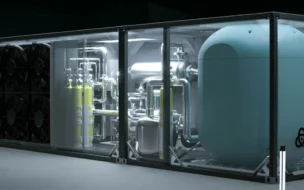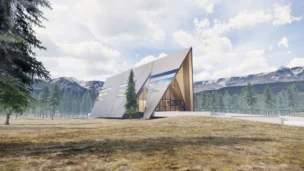TerraPower’s construction permit application for an advanced nuclear plant is officially in the NRC’s hands.
The company’s bid to build a plant for its Natrium fission reactor is the only application for a commercial reactor under consideration by the NRC. The commission is expected to spend up to three years conducting a technical review.
Pearly gates: TerraPower has billionaire roots. The company was founded by Bill Gates in 2006 to kick-start efforts to revolutionize the nuclear power industry with a traveling wave reactor concept—a machine that would make and use its own fuel for a period of time. TerraPower has raised nearly $1B in private funding since its inception.
The company has pivoted on its reactor concept a few times and today pursues a different approach. The Natrium concept is a 345 MWe sodium-cooled fast reactor paired with a molten salt-based reserve system, which lets the operator build up power when it’s not needed on the grid, then let it rip when demand increases.
TerraPower picked Kemmerer, WY, for its first reactor deployment.
- The full project is projected to cost ~$4B.
- The DOE has authorized up to ~$2B in funding to support Natrium development through its Advanced Reactor Demonstration Projects program.
- TerraPower says it’s planning to get the cost of future plants down to $1B apiece.
Under review: TerraPower has been working for the NRC on its construction permit application for quite a while, and the day has finally come.
The path is far from finished. The next steps in the NRC’s process:
- Determining whether the application is complete enough for a full review (which it may not be)
- Beginning the technical review and issuing an estimated timeline to the company
“We are a young nuclear company,” TerraPower CEO Chris Levesque told Cowboy State Daily. “It’ll take about two years to get the permit approved, taking time to dot the i’s and cross the t’s. That’s only the nuclear part.”
In the meantime…The company doesn’t need the NRC nod to begin building the non-nuclear parts of the plant. TerraPower is confident enough about getting a license in the next several years that it’s breaking ground at the Kemmerer site in June.
There’s also the question of building a strong fuel pipeline for an eventual fleet of Natriums. TerraPower has a deal with a major uranium mining company in Wyoming to create domestic access to high-assay low-enriched uranium (HALEU) and prevent supply bottlenecks for advanced reactor deployment.
Lead Reporter of Ignition





